In the rapidly expanding universe of cryptocurrencies, Binance’s token, BNB, stands out as one of the most influential and widely used digital coins. Originally launched in 2017 by the global exchange platform Binance, BNB was conceived as a utility token to offer users discounts on trading fees. Since then, its application has expanded well beyond mere use on Binance, turning it into a cornerstone for a wide variety of financial operations and decentralized applications on the BNB Chain.
With a market capitalization that regularly ranks among the top five cryptocurrencies in the world, BNB has established itself not only as a heavyweight currency, but also as a barometer of the financial health of the entire crypto sector. This prominent position compared to other digital currencies like Bitcoin and Ethereum, which dominate the market by capitalization, puts BNB in a unique position to capitalize on market fluctuations and emerging trends in the field of cryptocurrencies.
In this article we will explore how the distinctive characteristics of BNB can be used to build a robust algorithmic trading strategy, based on a reversal approach using Bollinger Bands.
Summary
Bollinger Bands
This indicator takes its name directly from its inventor John Bollinger, who analyzed the behavior of prices as they moved away or closer to their moving average. Bollinger decided to include two bands, calculated as the standard deviation of the simple average of prices. The Bollinger Bands are therefore formed by 3 elements and are calculated through the following mathematical functions:
- UpperBand = average price of the last N periods plus 2 standard deviations;
- MedianPrice = average price of the last N periods (20 is the recommended starting number);
- LowerBand = average price of the last N periods minus 2 standard deviations.
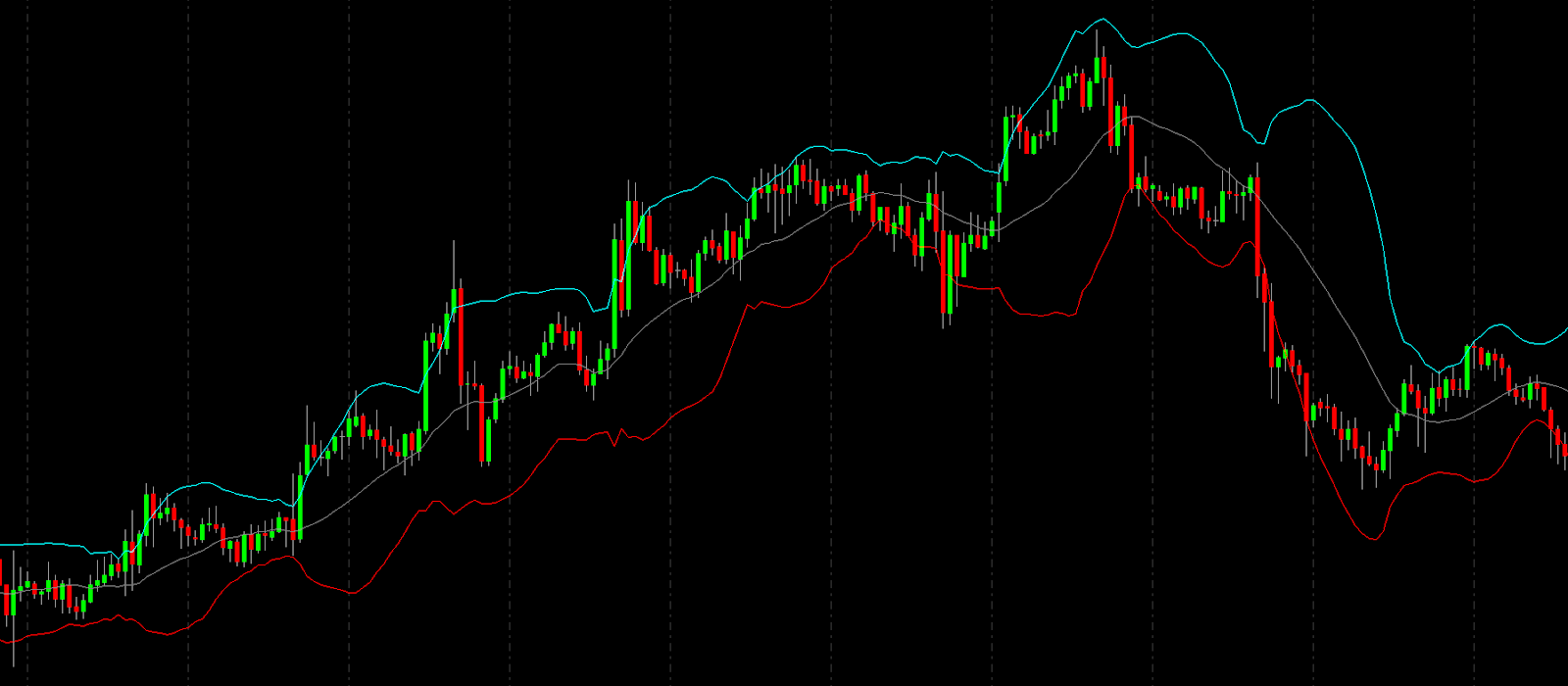
Reversal trading strategy (Bollinger Bands) applied to BNB
The strategy that will be adopted is an automatic system with ‘mean reverting’ logics, which exploits Bollinger Bands as a market reversal point. When prices reach the upper band, we will sell, while on the lower band we will buy.
The session under consideration conventionally starts at 00:00 GMT and ends at 23:59 GMT, to make it coincide with the solar day, as cryptocurrencies are quoted 24 hours a day.
Assuming to operate with $10,000 per trade, the trade will be closed when a profit target of $3,000 is reached, as the first value. It will be very useful to also use a fixed stop loss from the beginning, which we assume to be $1,000. The stop loss should somehow protect the invested capital from trades with very high losses.
Applying this strategy to the BNB/USDT pair on a 15-minute time frame, it is possible to see how this ‘operating engine’ would have performed from 2021 to today. Previous data is not taken into consideration because, starting from 2021, BNB has begun to establish itself among the main cryptocurrencies in the world. This phenomenon is also due to the strong overall growth of the crypto world and in particular the DeFi sector, with a significant increase in the total value locked (TVL) in various platforms based on BNB Chain. BNB has been used as the main token for transactions and governance on many platforms, which has allowed an increase in demand and consequently its price, rising to over 15 times its average value in 2020.
Results of the reversal strategy (Bollinger Bands) applied to BNB
In figures 2, 3 and 4 the metrics obtained from the mean reverting strategy based on Bollinger Bands are visible: the results are encouraging with a growing equity line. This is definitely a good starting point.
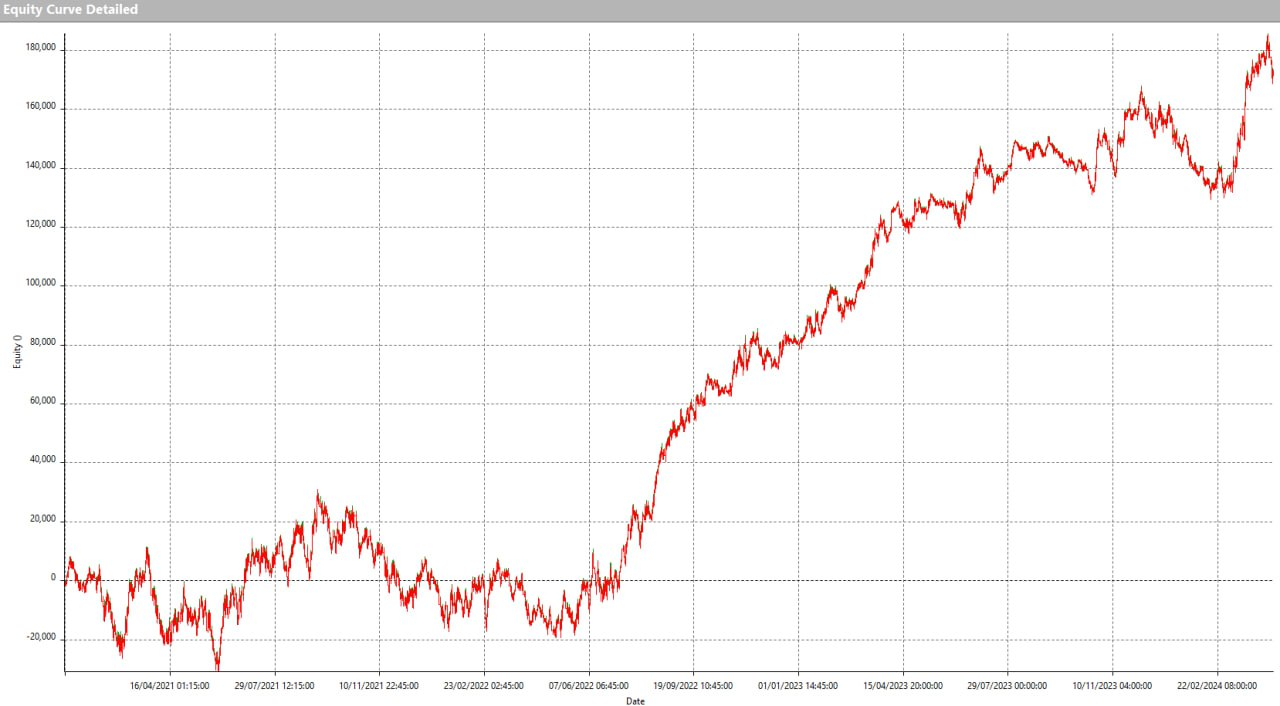
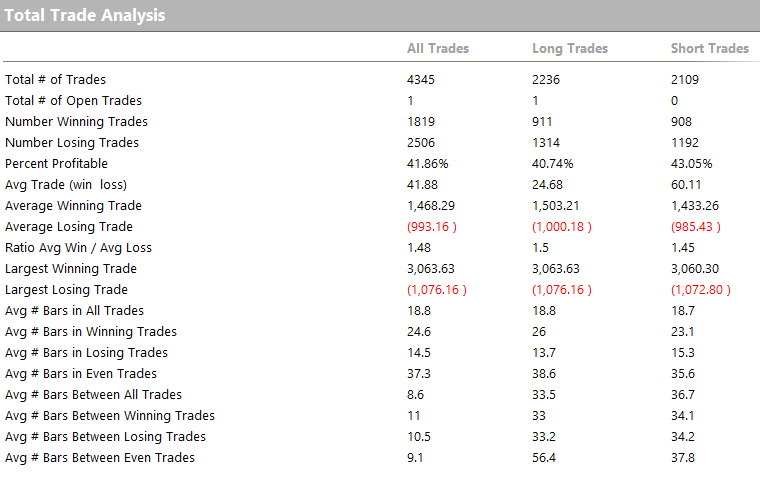

By analyzing the results more closely, it is possible to notice that the average trade stands at around $41, which compared to the amount of the single operation ($10,000) is equivalent to 0.41%, a value that does not guarantee to cover the operating costs.
Optimization of the reversal trading strategy (Bollinger Bands) applied to BNB
Trying to define a different operating window could lead to a better result. Therefore, we proceed with optimizing the start time of the operation and its duration (expressed in number of 15-minute bars). The optimization results are visible in figure 5. Operating from 00:00 until the end of the following 60 bars, or until 15:00, the values improve significantly: the total profit of the system rises to $222,450 with over 30% fewer operations (2,875), consequently the average trade rises to $77.

Results are definitely better, but they indicate a still rough strategy, with a larger average trade, but still not very high, and a rather high drawdown compared to the net profit (Net profit/Max DD = 3.6).
To proceed further, one could try to optimize the initially hypothesized stop loss and take profit values. In fact, from a first optimization on the stop loss, it is confirmed that the value of $1,000, which is 10% of the position value, achieves interesting results. Continuing further, in figure 6 it can be seen that by varying the take profit in steps of $500, there are interesting and rather stable results around $5,000-6,000. Increasing these values improves the metrics, but not in a very significant way, so one could choose, for example, to use $6,000.
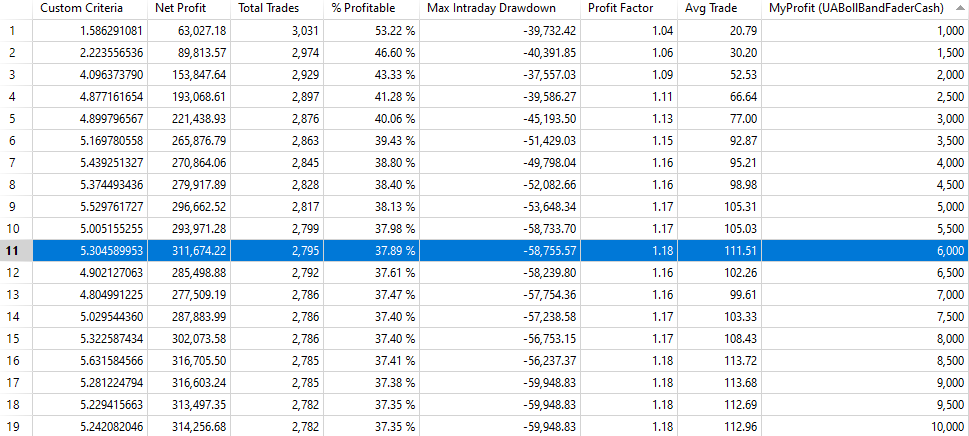
Adding patterns to the reversal strategy (Bollinger Bands) applied to BNB
Considering that the strategy still makes many trades (about 2,800 in 4 years), there is probably still room to further filter the operations. To do this, you could use some price patterns that can identify the best conditions in which to execute the operations, filtering out those with a lower probability of success.
For this purpose, we will use a proprietary list that includes many different price combinations, which will help us understand in which situations BNB seems to better respond to the entry logic of this system.
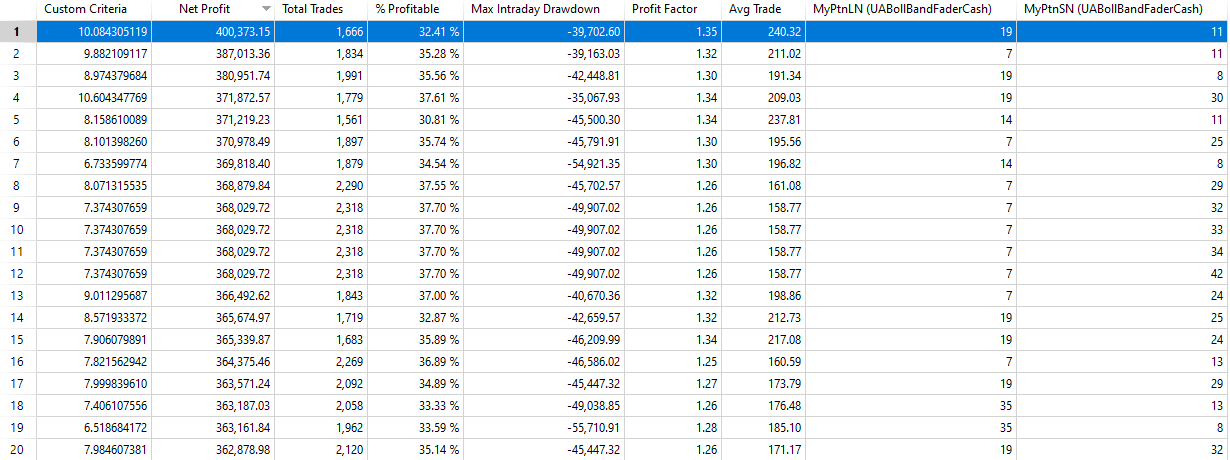
By analyzing the various combinations of patterns, for example, it is found that by inhibiting the operability when the patterns “PtnLN=19” occur for the long side and “PtnSN=11” for the short side, a good compromise is reached between the main reference parameters (Net profit, Average trade, Max Intraday Drawdown). With the pattern PtnLN=19, it will be avoided to go long if the closing of the candle of the last session was greater than 0.5% of the closing of 2 sessions ago. With PtnSN=11 instead, it will prevent from entering short simply if the previous session confirmed a downtrend in progress (marking both a lower low and a lower high).
It is noted how this combination of filters actually manages to increase the average trade ($240) and the net profit rises above $400,000. Even the drawdown decreases and stands at -39,702$. A good improvement, also visible from the more regular shape of the equity line (figure 8), although in the second part of 2023 it seems to have lost some shine. Only time will confirm the goodness of the choices made during the optimization phase.
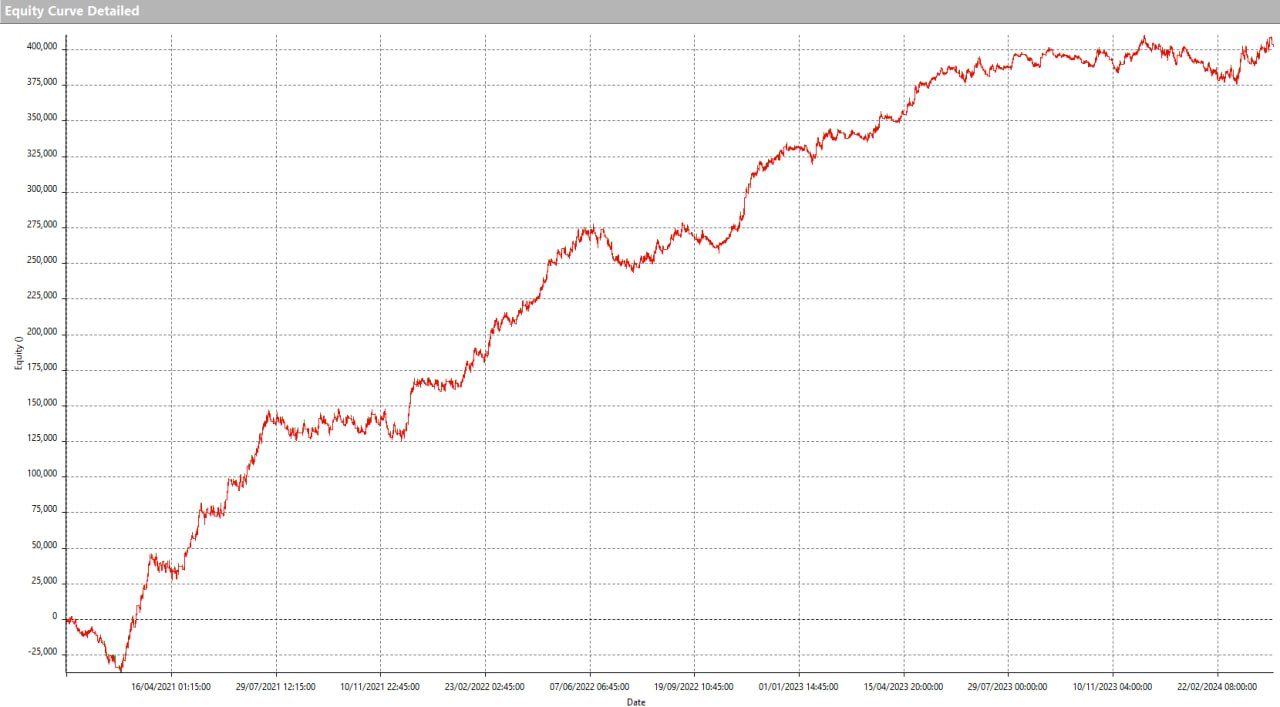
Conclusions on the strategy
The reversal strategy with Bollinger Bands has proven to be quite interesting on the BNB/USDT pair, although it would need further refinements to be ready to operate live in the market. This particular cryptocurrency, although established, is still quite young and presents many opportunities for traders who want to try different approaches to the market. As always, it is left to the reader to experiment and develop this idea to the fullest.
Until next time and happy trading!
Andrea Unger
 en.cryptonomist.ch
en.cryptonomist.ch
